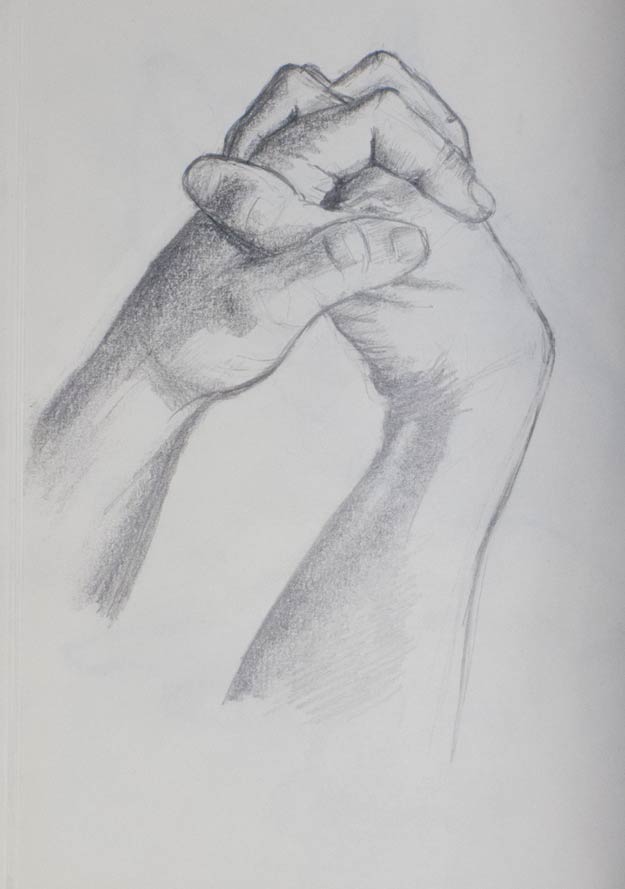
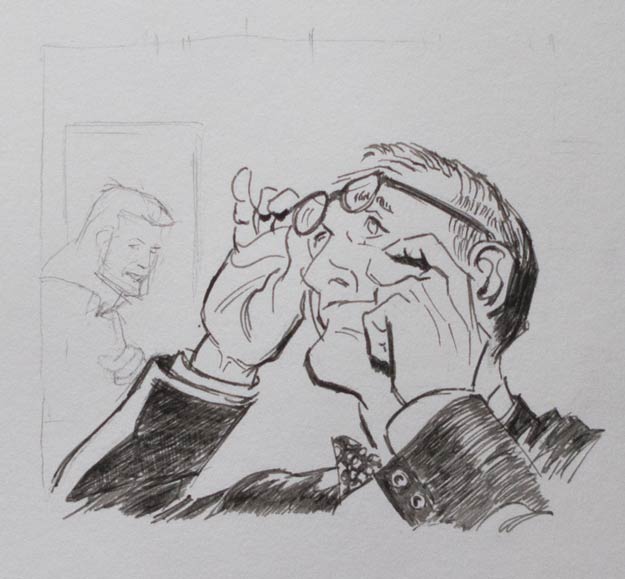
Copy of a Leonard Starr panel.
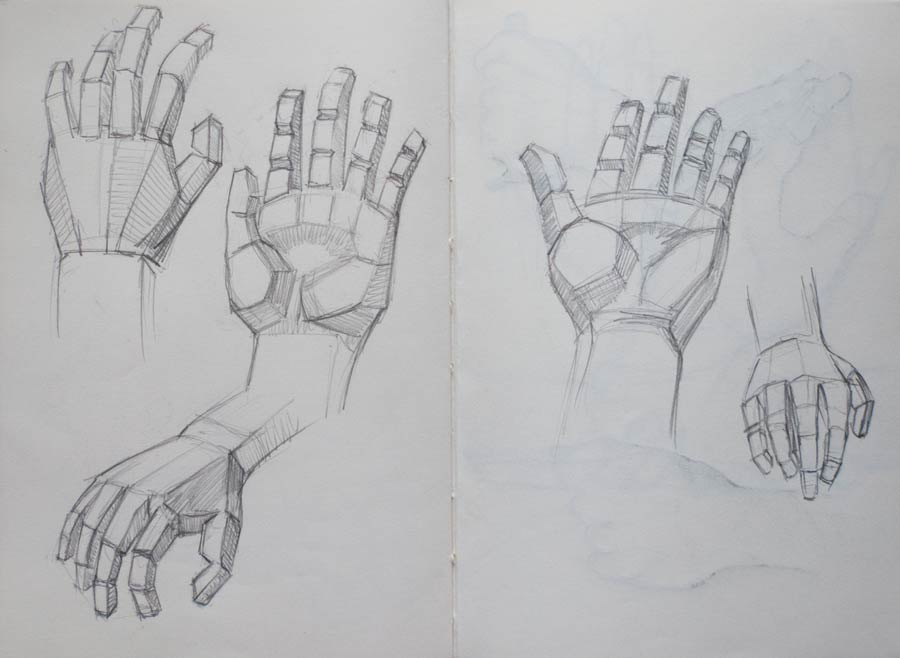
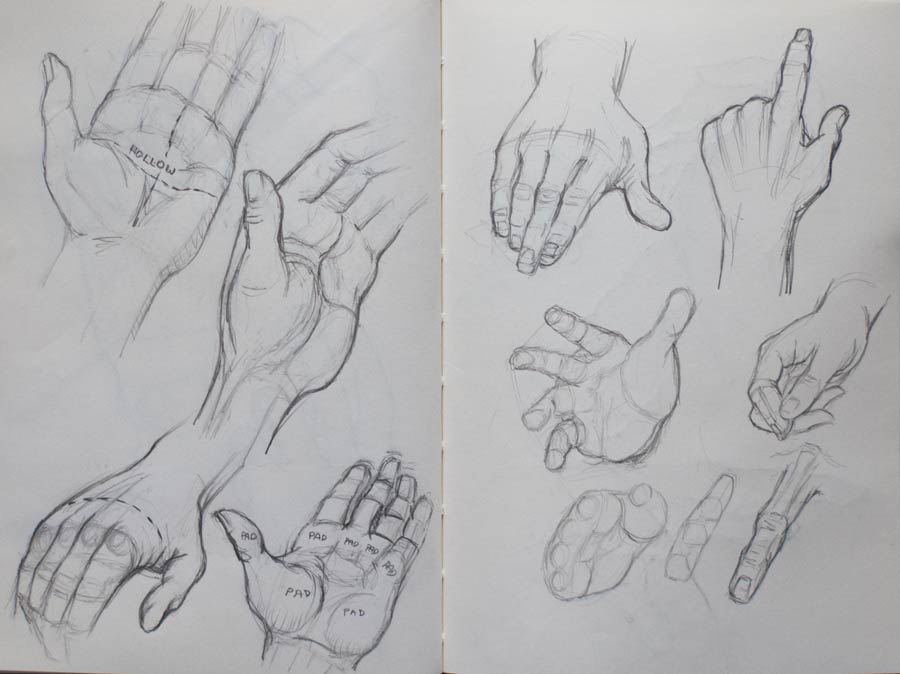
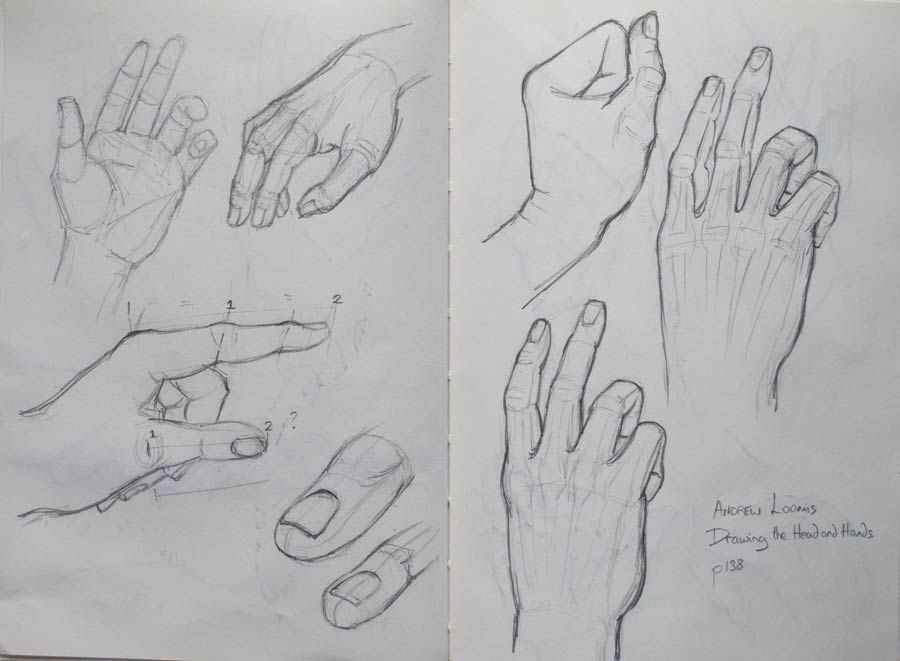
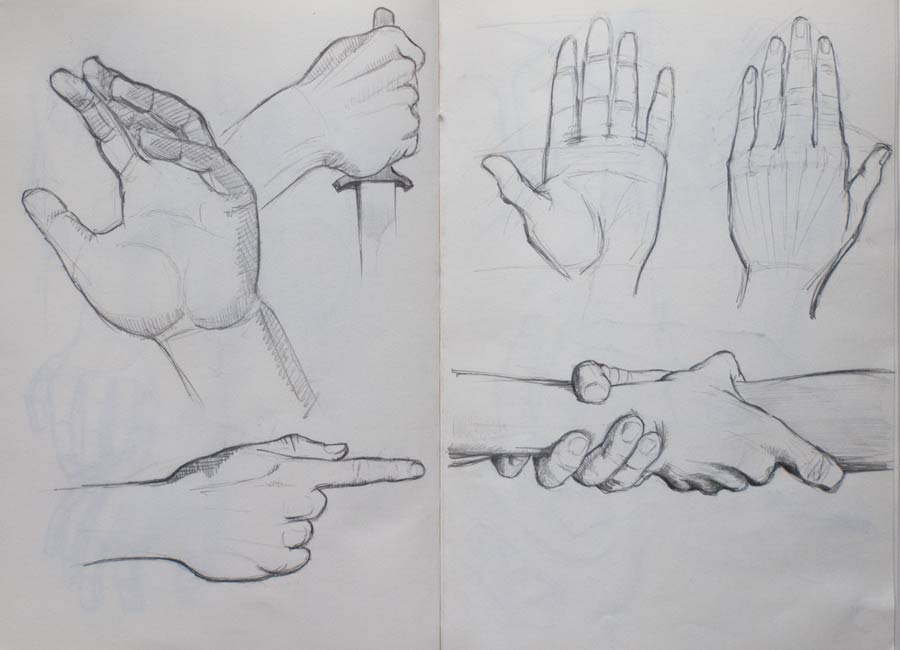
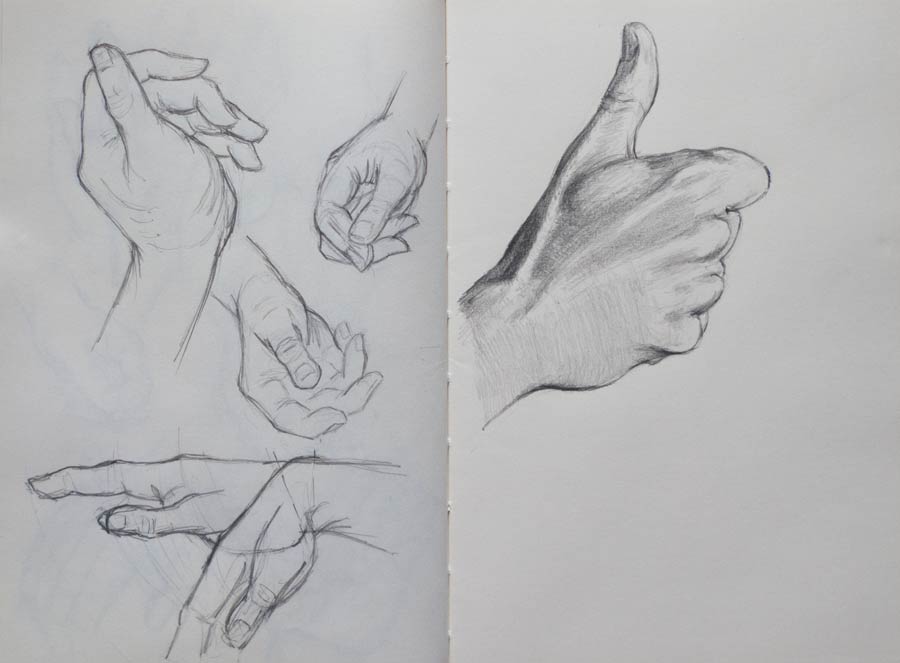
Hands are hard to draw, aren’t they? One slip of the pencil and a finger turns into a misshapen sausage, a thumb develops an extra joint. More than once have I tried to sketch a hand from memory only to find I’ve drawn five fingers and a thumb.
Andrew Loomis tells us to ‘get rid of the idea that hands are hard to draw. They are simply confusing to draw unless you know how they operate. Once understood, hands become fascinating.’
It’s helpful to keep the rules of proportion in the back of the mind while drawing, but the most useful advice from Loomis is more practical and vivid:
‘The most important fact to remember about the hand is that it is hollow on the palm side and convex on top. The pads are so arranged around the palm that even liquid can be held in the hand. The hand served primitive man as a cup…’
‘In the drawings above, note how the hollow of the hand has been carefully defined. Also note the resulting curve of the back of the hand. Hands never look natural or capable of grasping until the artist understands this feature of the hand. All these hands look as if they could take hold of an object. … A hand that does not look capable of clasping is badly drawn. Study your own hands.’
So, continuing the philosophy of ‘if you can’t draw noses, draw lots of noses’, I’m going through the process of copying drawings and photos of hands, hoping that something will stick.







